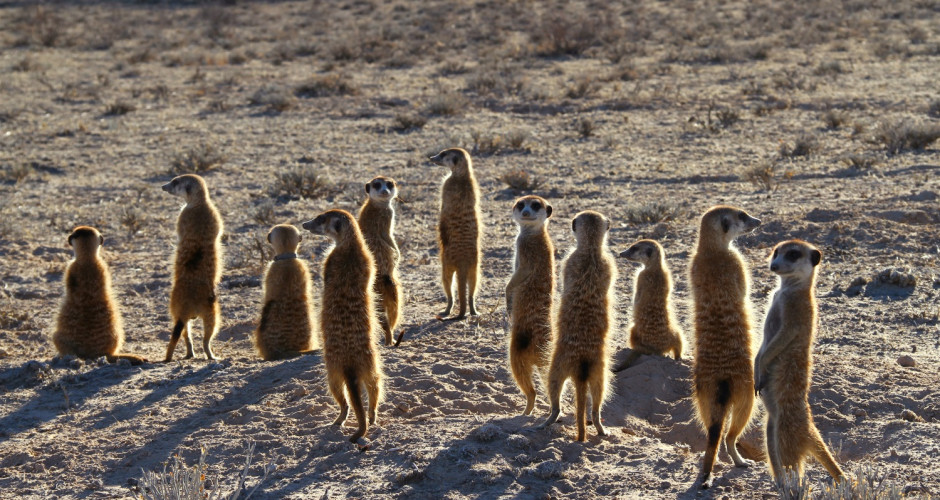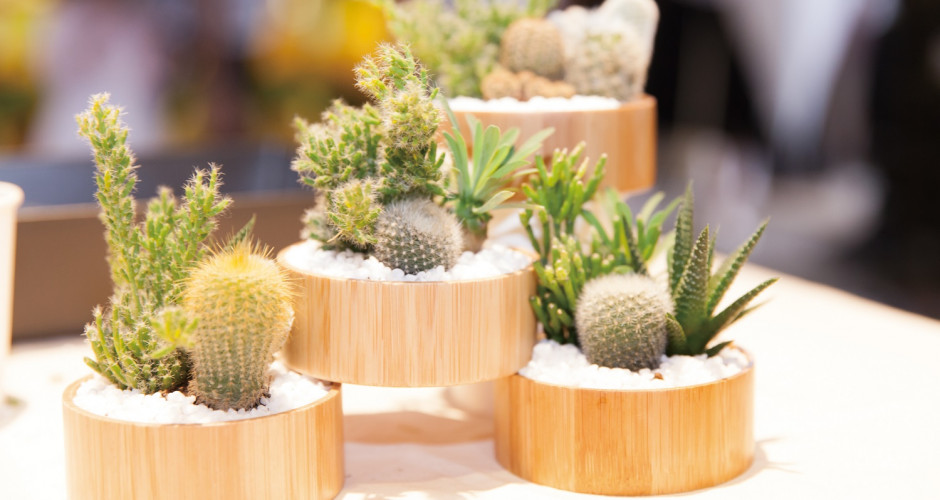Nature Needs Our Help. Louie Psihoyos’ Racing Extinction features never-seen-before images and stories that expose environmental issues around the world, issues that seem so far away and irrelevant to us. But the truth is, if you think carefully, protecting the earth is actually not that difficult. You can start by taking action in everyday life; or you could even protect animal habitats to restore nature’s beauty. Forests and oceans play an important role in the world’s carbon cycle by absorbing carbon dioxide and producing oxygen. They are also the homes of a diverse ecosystem of animals and plants. However, economic growth poses a great threat to forests and marine ecosystems, pushing more and more species to extinction.
Uncovering Forest Issues
In July 2015, fires began raging through the forests of Indonesia, resulting in a smoky haze engulfing the nation and affecting several neighboring countries for months. The man-made fires not only caused a significant deterioration in air quality, but also contributed to a reduction in the biodiversity of Indonesia’s tropical forests, which represent some of the most diverse habitats on the planet. The fire outbreak also added to existing deforestation, further imperiling the orangutan as well as many endangered species. Humans sure paid a heavy price for their wrongdoings.
The environmental and public health crisis is the devastating result of the illegal slash-andburn practices, where land is set on fire as a way to clear it for new planting. The dry season is also a factor fueling the fires. Moreover, much of the Indonesia’s rainforests grows on top of peatland, which is highly flammable and causes fires to spread out-of-control. Once fire starts on peat, it is difficult to extinguish.
Perhaps Indonesia’s forest fire disaster was too far away to create an impact on Taiwanese people, but we can turn our focus to our island because, right now, Taoyuan’s Guanyin coastline is in desperate need of our attention and help to protect an animal habitat: algal reefs.
Algal Reefs: Natural Habitats of Western Taiwan
Did you know that the largest algal reef in Taiwan is found in Taoyuan where O’right is located? Home to an abundant variety of living creatures, algae reefs are found along the coastline of Guanyin to Xinwu as a result of calcification and deposition. Algal reefs are different to coral reefs as they are formed from crustose coralline algae (plants) while coral reefs are built by colonies of anthozoans (aminals). With a growth rate of an average of less than 1 cm every ten years, it is no wonder that algae reefs are valued as precious ecosystems of Taiwan.
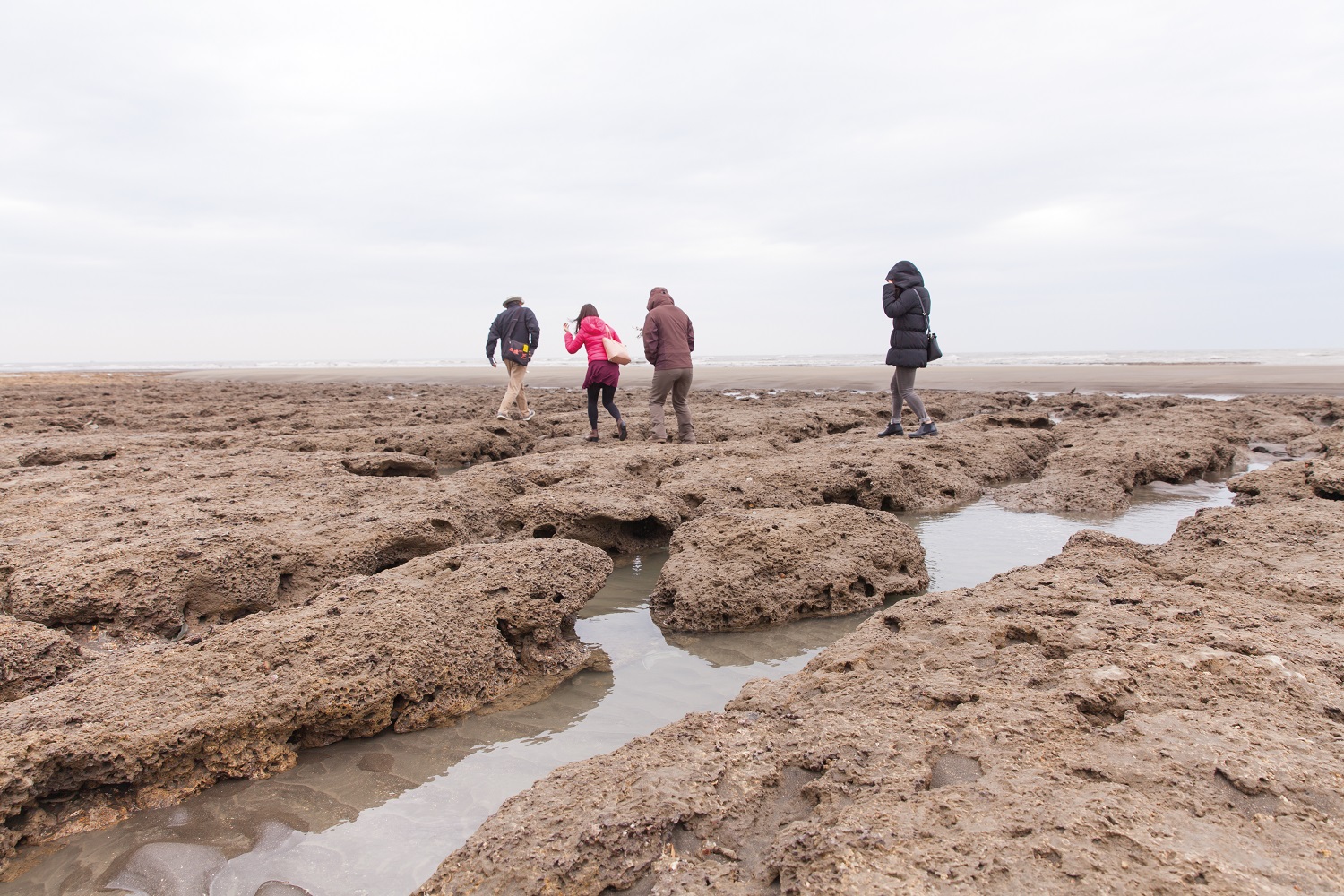
Photo /// Shulin River algal reef discoloration
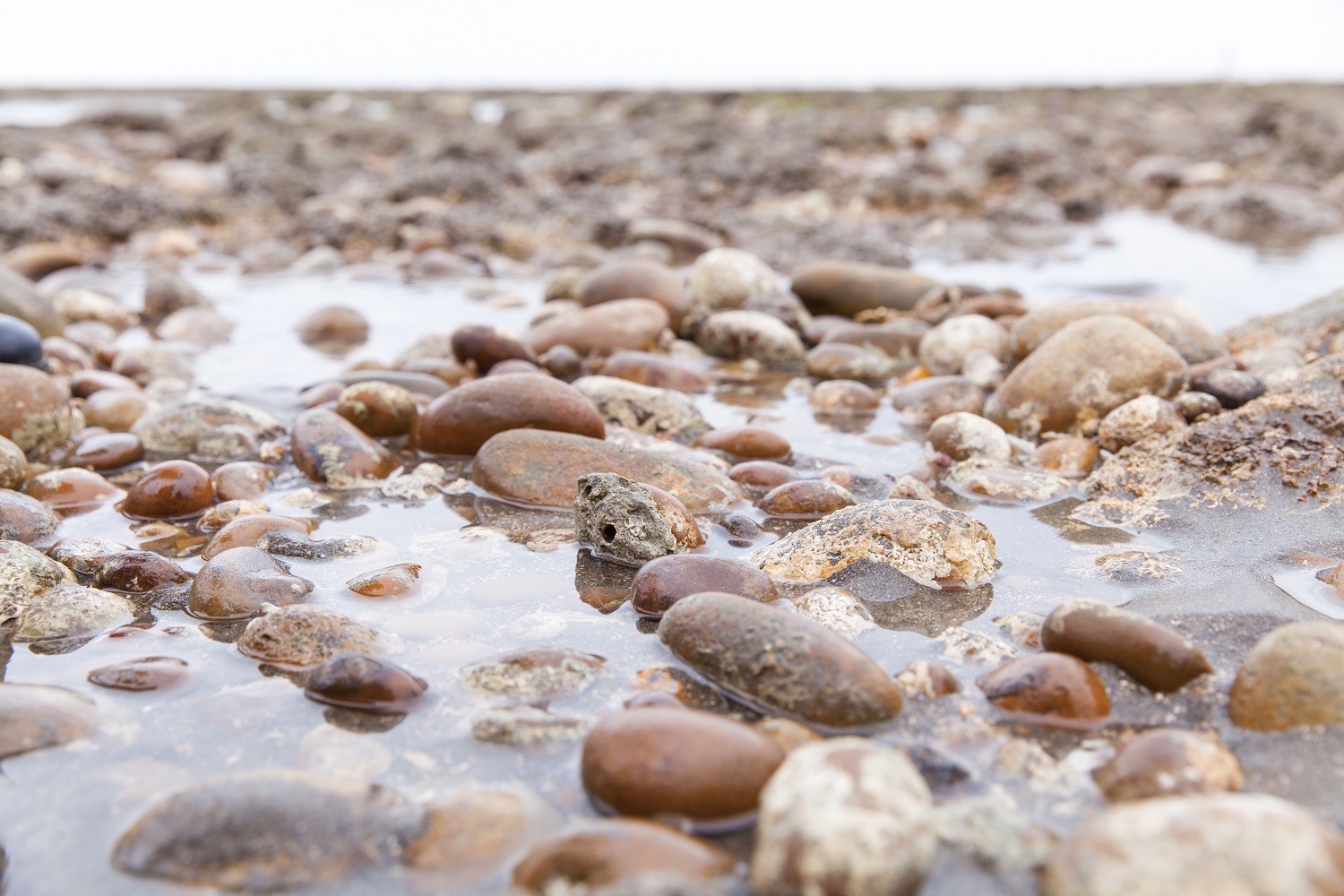
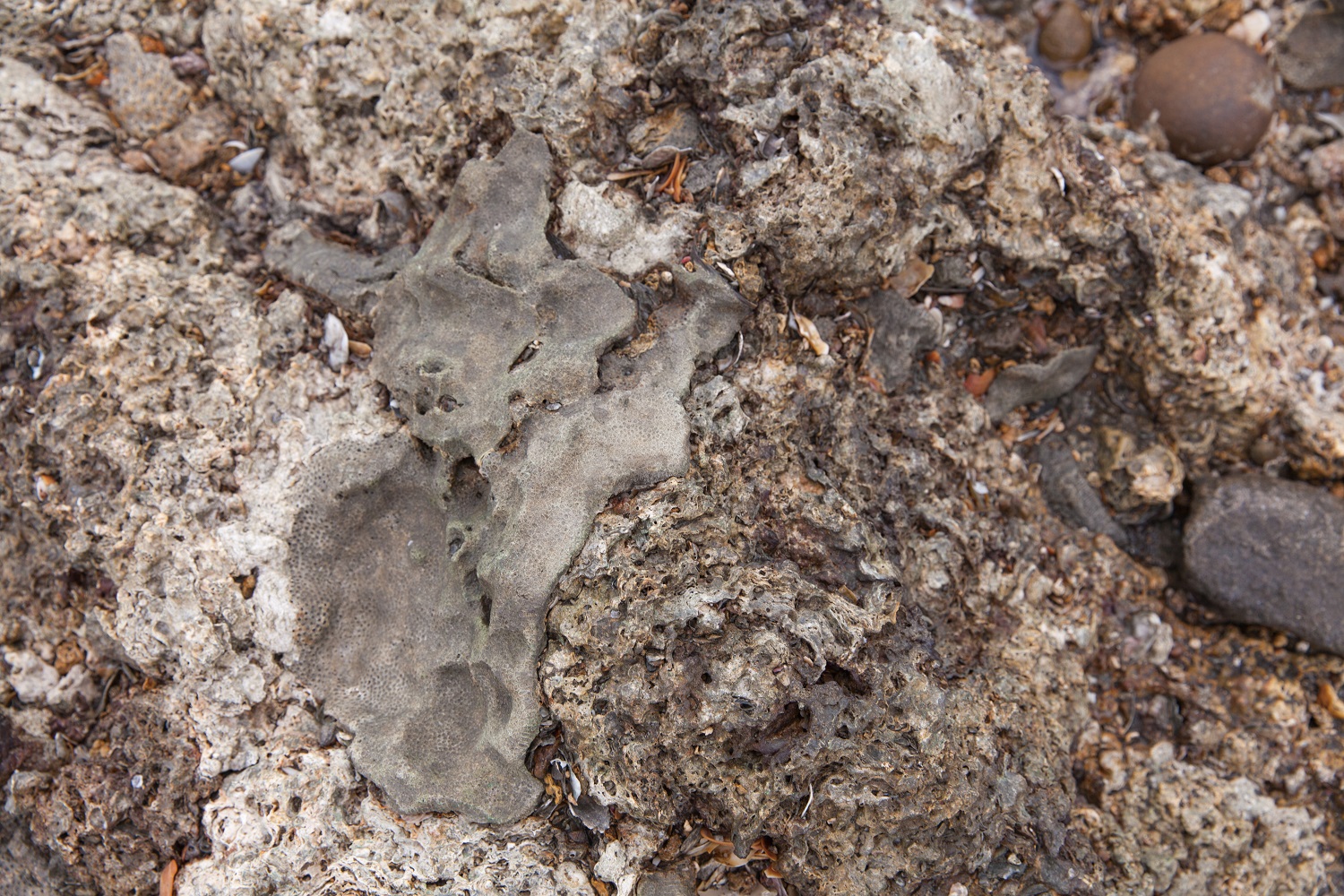
Photo /// White parts are algal reefs, gray parts are coral reefs
Guardian of Algal Reefs: Pan Zhong-Zheng
In order to gain a better insight into algal reefs, we visited the Guan Xin algal reef sustainable use area with the help of Director of Taoyuan Alliance Pan Zhong-Zheng to unveil the mystery of algal reefs. With the dream to protect the rivers to give future generations a clean environment, Pan has devoted himself to observing and maintaining Guan Xin algal reefs. So, having witnessed the changes in algal reef ecosystems, Pan recalled with a heavy heart the once-active algal reef ecosystem that is now threatened due to recent economic development and industrial wastewater treatment. Estimations show that there are only 3,000 to 3,500 Chinese egrets, a vulnerable Class II protected species, left in the world. Over a decade ago, 300 Chinese egrets passed through Taiwan. In 2012, only 7 were seen.
Occasionally 2 or 3 birds would appear, but most of the time the rare species are nowhere to be seen because damage to algal reef ecosystems has left them with no food to eat. Taoyuan’s Guan Xin algal reef is losing its luster.
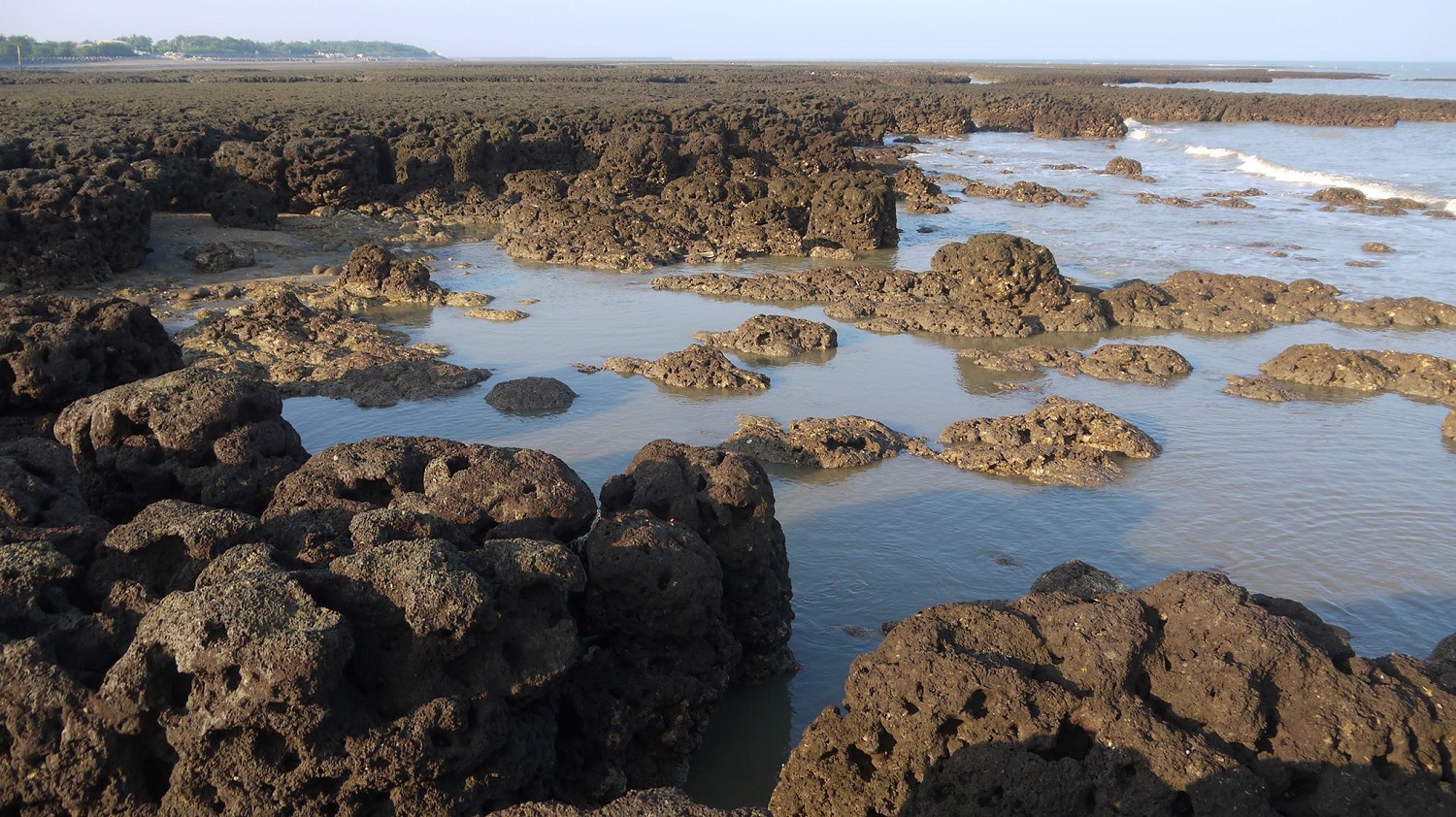
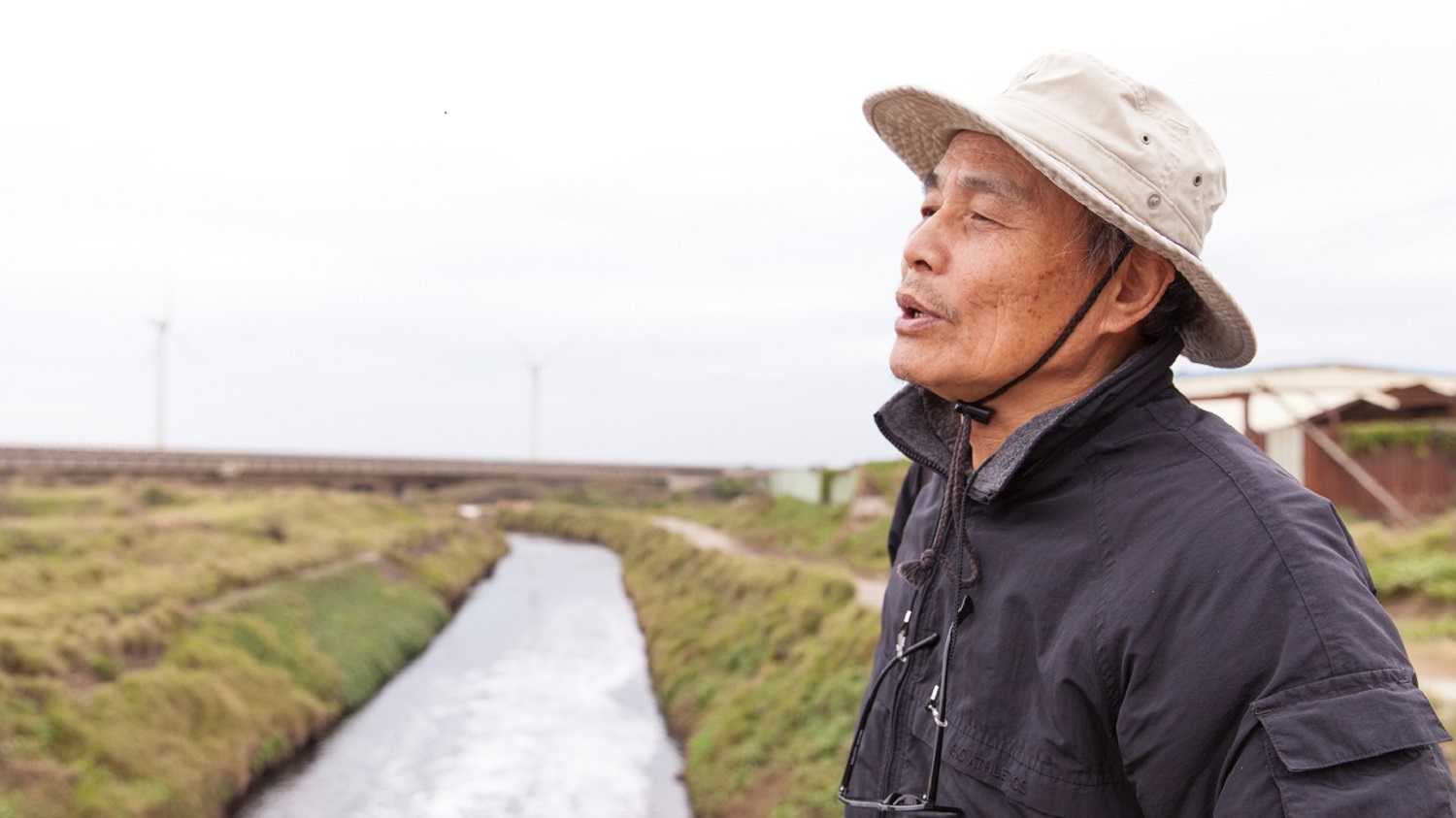
The Joys and Sorrows of Algal Reefs
Guan Xin algal reef boasts a rich biodiversity. A few years ago, Taoyuan Alliance discovered a new species on the algal reef, the violet-eyed swimming crab (Carupa tenuipes). As Pan Zhong-Zheng brought us into the world of algal reefs, we were awed by its rich biodiversity of ecosystems. Who knew that such a small little corner in Taiwan could have so many surprises! Crevices in the reef allow small fishes to hide from predators. Now, due to recent damage to algal reefs, their little homes are no longer safe to live in and they are forced to leave, thus resulting in less fish to catch. The effects of algal reef destruction are immeasurable.
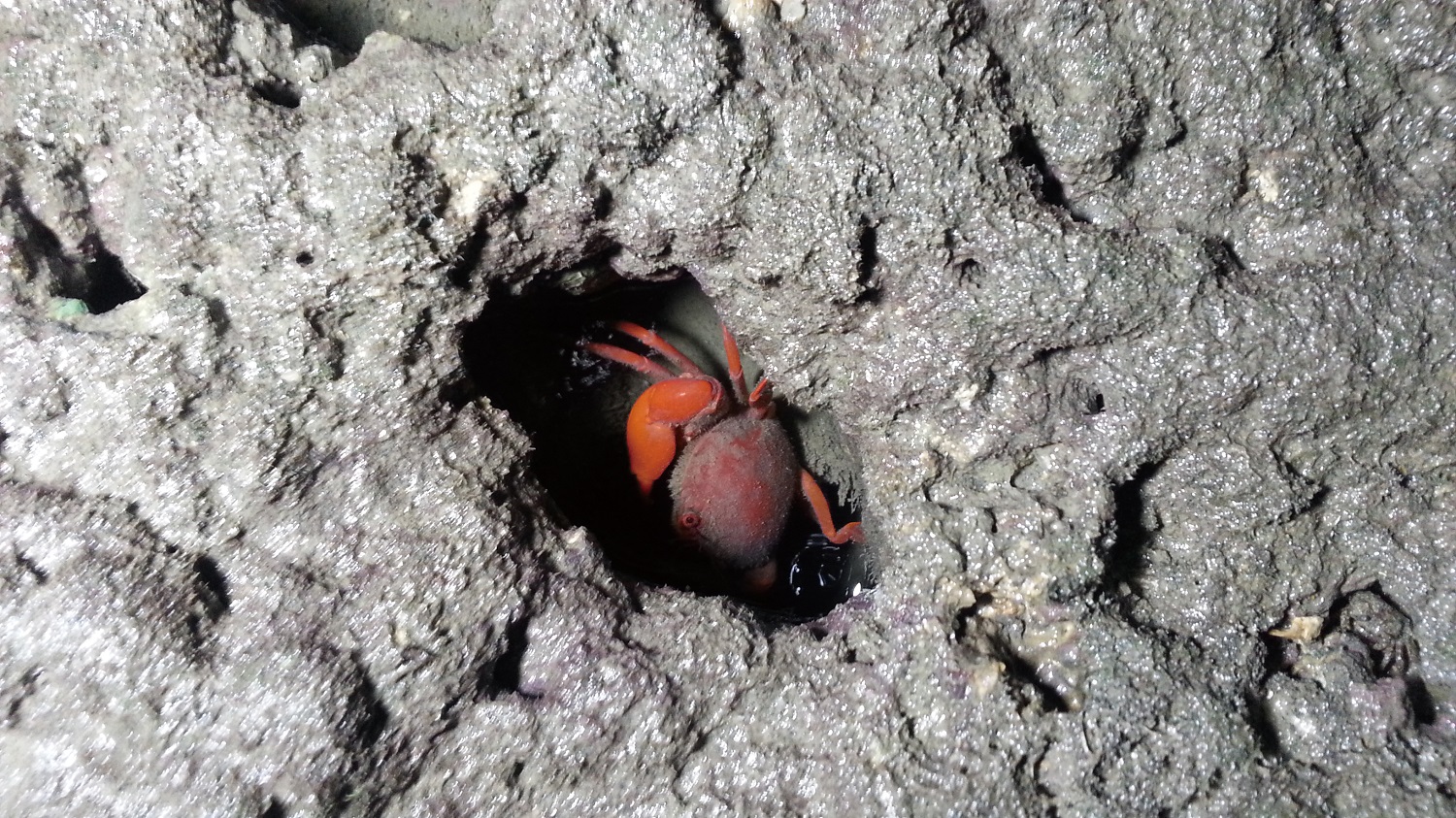
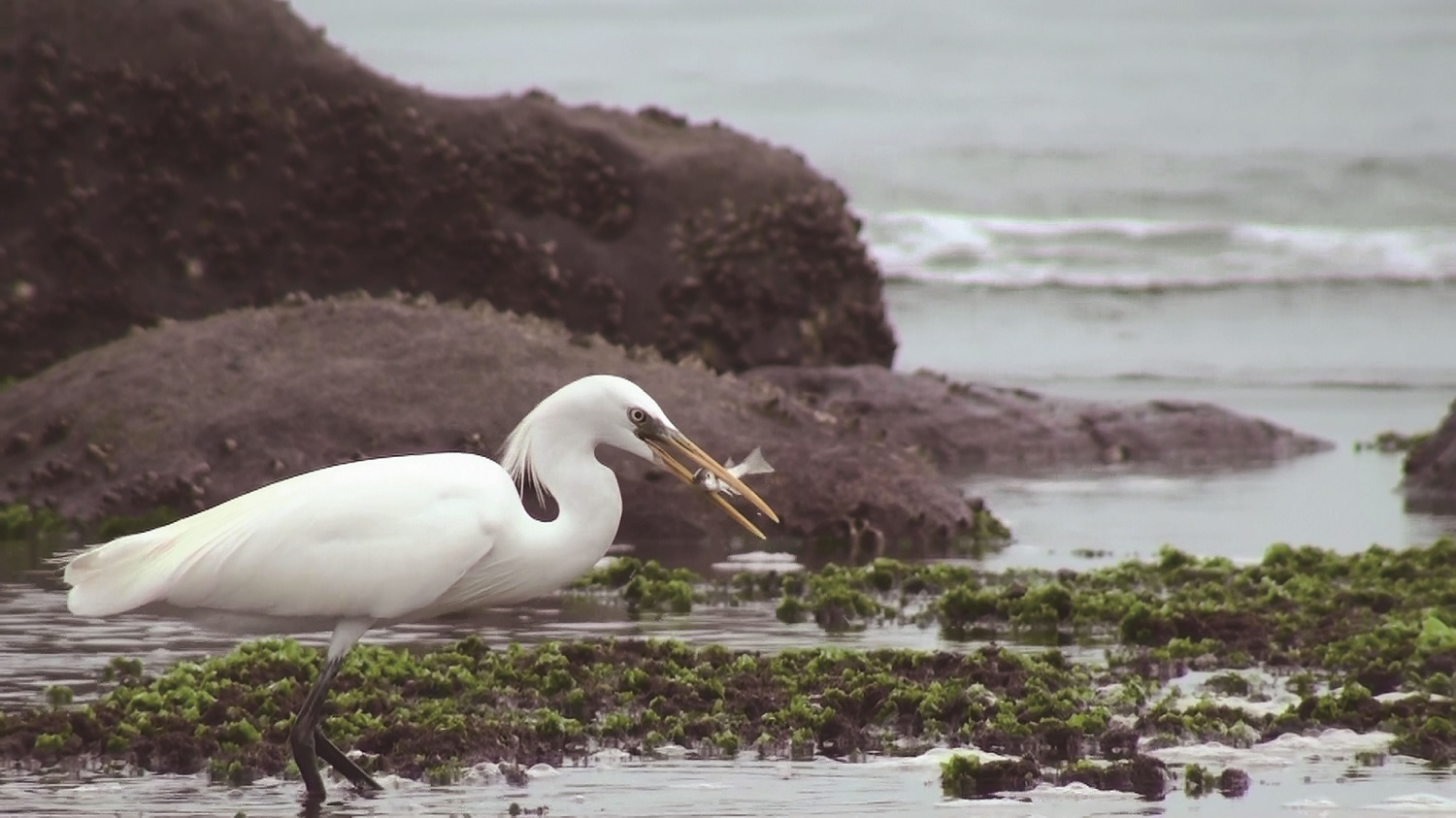
Algal Reef Ecosystems Losing its Luster
Pan took us to mangrove swamps to show us wildlife and fish habitats. As Pan told us the story of this piece of land, it was as if we were there, witnessing the ecological changes to Guan Xin algal reefs with our own eyes. Once upon a time, Kandelia obovate, a mangrove species could be seen everywhere by the embankment; now, they are slowly disappearing. Heading towards the outfall from the wastewater treatment plant in Guanyin Industrial Park, we were greeted by an unpleasant odor coming from the muddy streams of water. Even we could not help but express concern over the situation. To make matters worse, instead of Shulin River algal reefs, what came into view was a beach covered in garbage, algal reef bleaching caused from pollution, and dead oysters. We didn’t see if on the news or hear it on the radio; we watched with our own eyes as the ecological crisis unfolded before us.
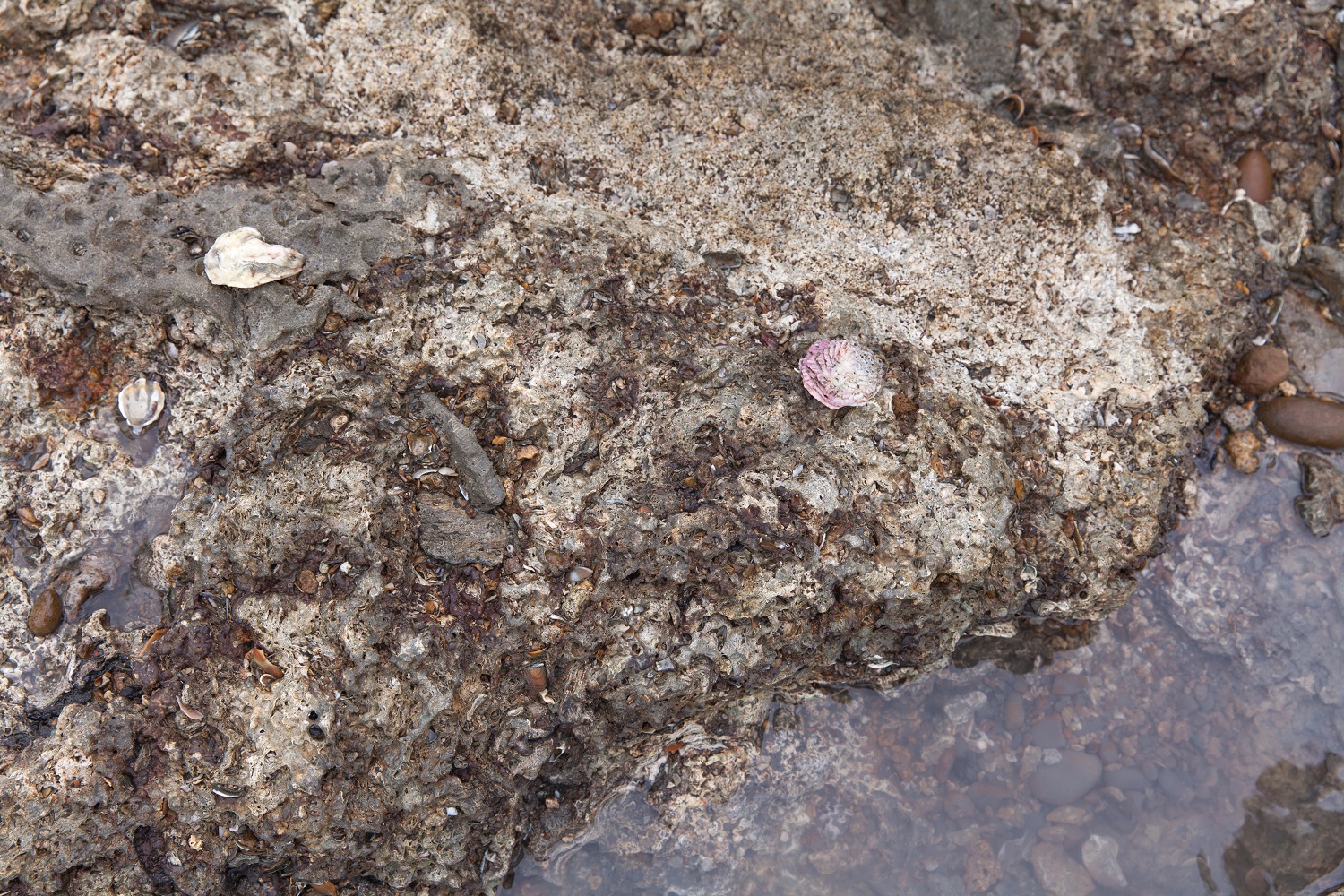
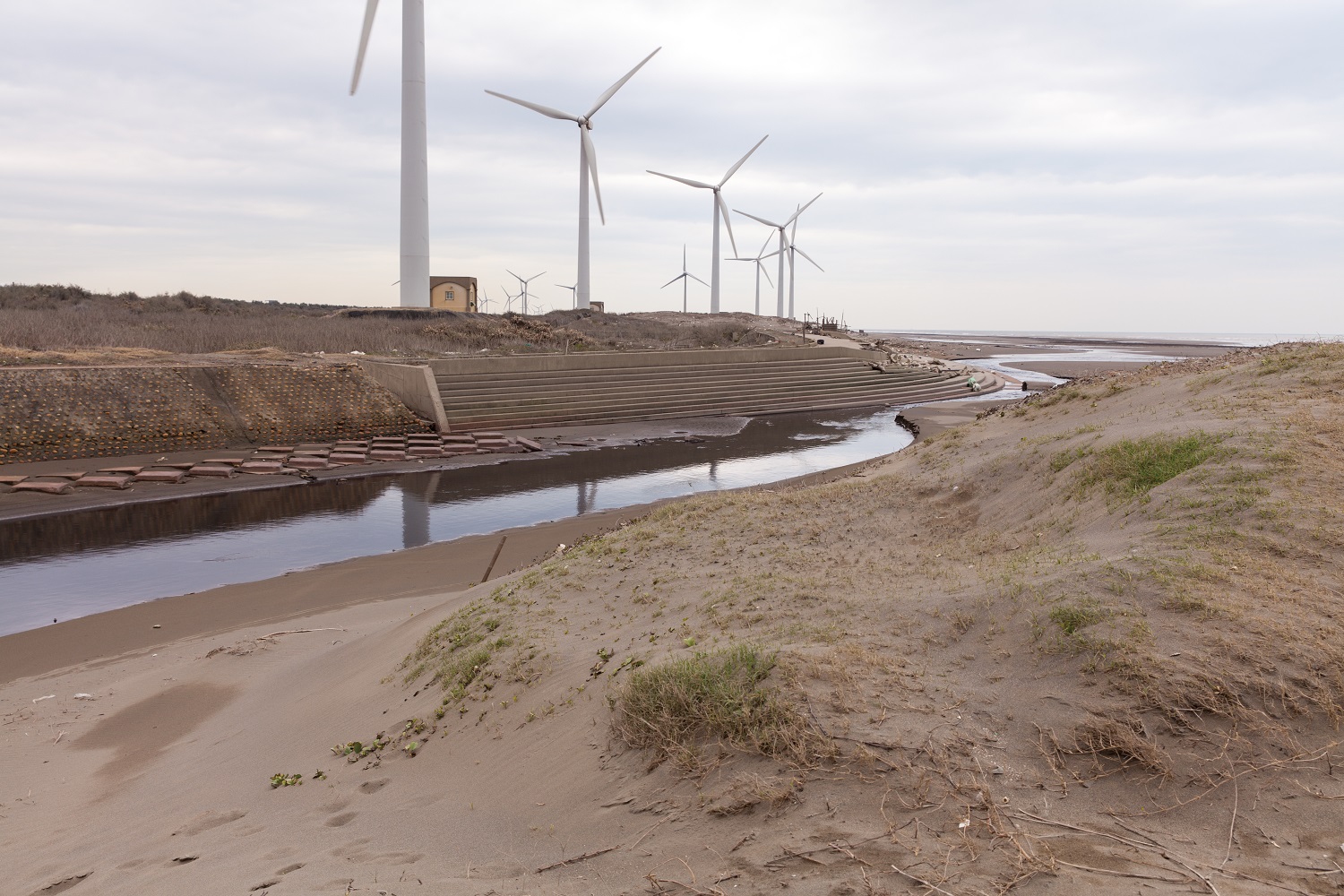
Photo /// Dead oysters on algal reefs, wastewater discharged into a river
The Guardian’s Aspirations
Guan Xin algal reef is currently the largest ecological area and one of the most protected ecosystems in Taiwan. However, Pan Zhong-Zheng urges environmental organizations to show concern and help restore the natural appearance and vitality of other damaged algal reefs as well to give species a safe haven. Let us all protect precious algal reefs across the island and bring back their luster
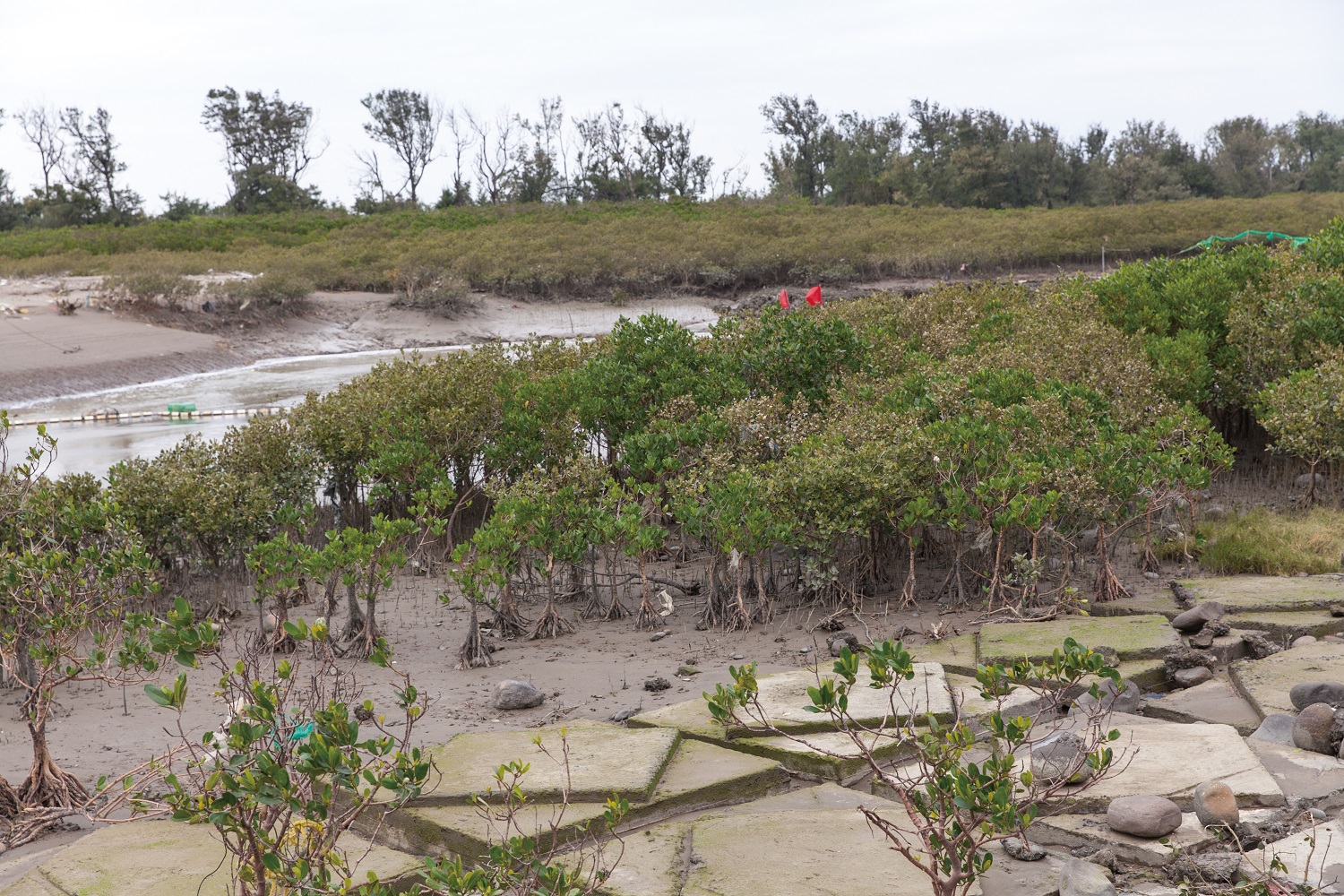
Photo /// Mangrove swamps
United as Guardians of the Environment
Pan engages in algal reef conservation and encourages people to help protect algal reefs. To give future generations precious resources, we should work together and restore the vitality and biodiversity of algal reefs. Small things lead to greatness. As long as you are willing to make an effort, everyone and anyone can use their power and make a difference. A little bit of love from you can contribute to making the environment a better and more beautiful place.
For more information on Guan Xin algal reef ecosystem, please visit the Taoyuan Algal Reef Facebook page
Reference

